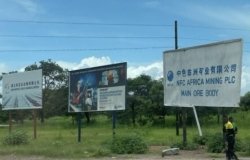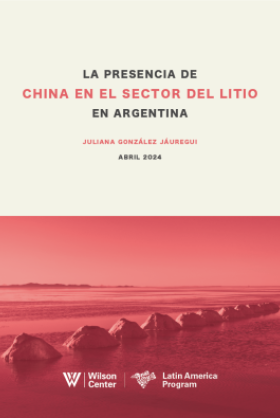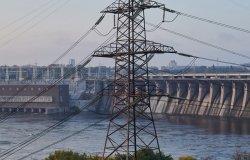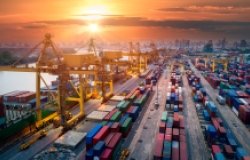Green Innovation in China: Book Launch and Panel Discussion
The development of wind power in China provides valuable insight into how cooperation and technology transfer has contributed to the fast-growing wind industry in the Middle Kingdom, which plays an important role in continuing the Chinese and global fight against climate change. On January 29, three leading experts on U.S.-China technology cooperation, Joanna I. Lewis, Levi Tillemann, and Banning Garrett, spoke at the China Environment Forum event on the development of U.S.-China collaboration on green technology, and its importance on climate change, innovation and other global issues.
Overview
“It is very hard to find a positive pathway to the future without the U.S. and China figuring out a way to cooperate,” said Dr. Banning Barrett, Strategic Foresight Senior Fellow for Innovation and Global Trends at the Atlantic Council, at the event on Tuesday. The development of wind power in China provides valuable insight into how cooperation and technology transfer has contributed to the fast-growing wind industry in the Middle Kingdom, which plays an important role in continuing the Chinese and global fight against climate change.
On January 29, three leading experts on U.S.-China technology cooperation, Joanna I. Lewis, Levi Tillemann, and Banning Garrett, spoke at the China Environment Forum event on the development of U.S.-China collaboration on green technology, and its importance on climate change, innovation and other global issues.
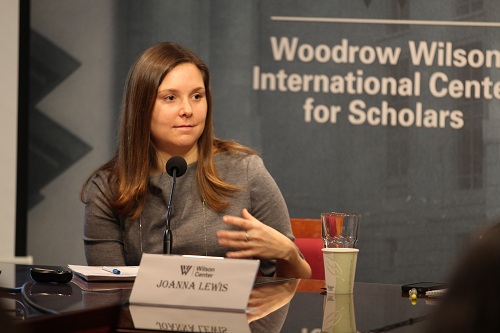
The Winds of Change
In her new book, Green Innovation in China: China’s Wind Power Industry and the Global Transition to a Low Carbon Economy, Dr. Lewis, Assistant Professor of Science, Technology and International Affairs at Edmund A. Walsh School of Foreign Service, Georgetown University, documented China’s wind industry’s rapid growth in the past 10 years. Though accounting for only 6 percent of the country’s overall installed electricity capacity, wind power is now the third biggest electricity source in China. Wind energy in China represents the largest clean energy investment anywhere in the world, thanks to a series of policy support and technology transfer from foreign companies. Dr. Lewis detailed the development of Goldwind, a leading Chinese wind company, and analyzed three models of technology transfer: licensing, mergers & acquisitions, and joint development.
China has written a success story on wind power development. It now enjoys the largest cumulative wind power capacity in the world, a number of Chinese manufacturers have emerged, and the prices and costs of wind power have begun to decline. Combining with her analysis on the wind power development in India and Korea, Dr. Lewis concluded her talk with three key findings:
- Substantial technical advances are possible in relatively short amounts of time;
- Licensing is a relatively inexpensive way to acquire knowledge, but future potential is limited;
- Tapping into global learning and innovation networks can be highly valuable.
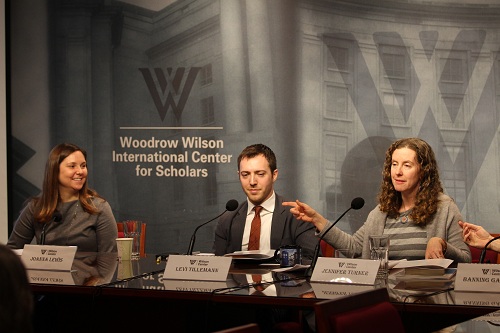
Cooperative Competitors
Dr. Levi Tillemann, Special Advisor for Policy and International Affairs, US Department of Energy, offered a historical view of U.S.-China technology cooperation. As early as January 1979, the United States and China had agreed to collaborate on broader science and technology development. Over the years, the two countries have had sizable cooperation on physics, nuclear, environment, waste management, energy efficiency, renewable energy and other areas. The establishment of U.S.-China Clean Energy Research Center and DOE Clean Energy Ministerial marks important steps in further collaboration in clean energy. Dr. Tillemann believes that the cooperation provides not only business opportunities, but also benefits the United States in food safety, nuclear safety and a number of other areas. The two countries also play leading roles in advancing global progress on a wide range of issues.
Dr. Garrett emphasized the importance of U.S.-China cooperation in the context of future global trends characterized by increased population, expended middle-class and urban development. Policy-makers at the top in both countries ought to provide much-needed commitment and leadership. The two countries need to recognize their interdependence, and expand their cooperation to a broader range of global challenges.
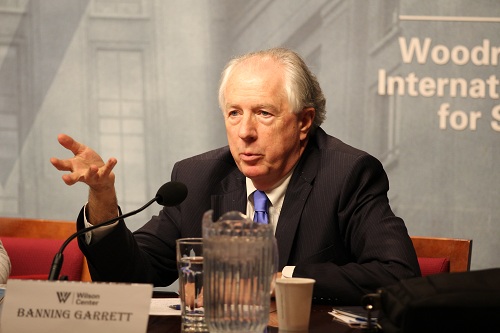
Speakers

Joanna Lewis
Levi Tillemann
Banning Garrett
Hosted By

China Environment Forum
Since 1997, the China Environment Forum's mission has been to forge US-China cooperation on energy, environment, and sustainable development challenges. We play a unique nonpartisan role in creating multi-stakeholder dialogues around these issues. Read more

Global Risk and Resilience Program
The Global Risk and Resilience Program (GRRP) seeks to support the development of inclusive, resilient networks in local communities facing global change. By providing a platform for sharing lessons, mapping knowledge, and linking people and ideas, GRRP and its affiliated programs empower policymakers, practitioners, and community members to participate in the global dialogue on sustainability and resilience. Empowered communities are better able to develop flexible, diverse, and equitable networks of resilience that can improve their health, preserve their natural resources, and build peace between people in a changing world. Read more
Thank you for your interest in this event. Please send any feedback or questions to our Events staff.
